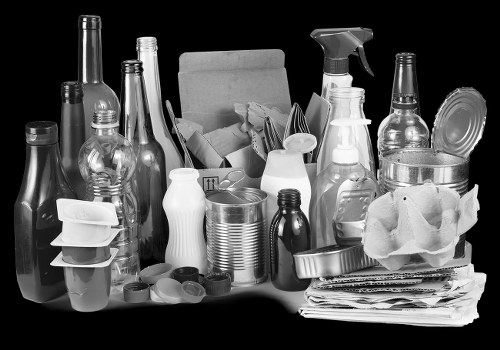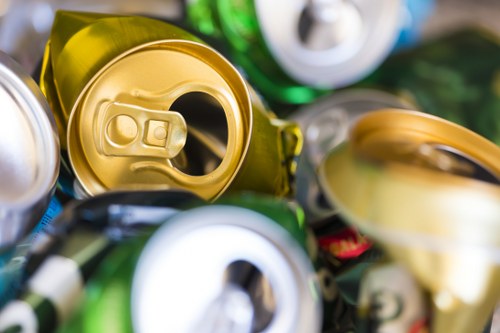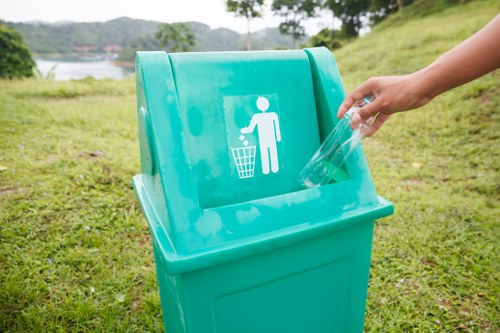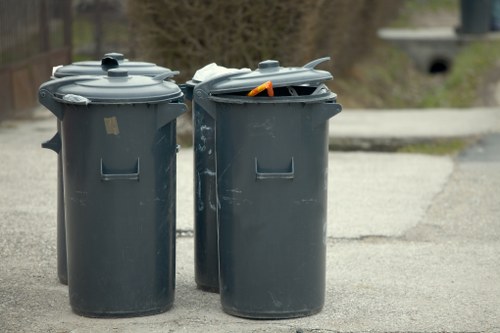Home Clearance in White Goods Recycle

Understanding Home Clearance
Home clearance is the process of removing unwanted items from your residence, making space for new possessions or simply decluttering your living environment. This essential task not only enhances the aesthetic appeal of your home but also contributes to a more organized and stress-free lifestyle.
When approaching a home clearance, it's important to consider the various items you intend to remove, particularly bulky appliances known as white goods. Proper management of these items is crucial for efficient clearance and environmental sustainability.
White goods, such as refrigerators, washing machines, and dishwashers, require special handling due to their size and the materials used in their construction. Recycling these appliances ensures that valuable resources are reclaimed and reduces the environmental impact associated with their disposal.

The Role of White Goods in Home Clearance
What are White Goods?
White goods refer to large household appliances, primarily used for routine housekeeping tasks. These include items like refrigerators, washing machines, dishwashers, and ovens. Their substantial size and heavy build make them a significant part of any home clearance project.
Understanding the nature of white goods is essential for effective recycling. These appliances often contain materials such as metals, plastics, and glass, which can be recovered and reused, minimizing waste and conserving natural resources.
Moreover, the disposal of white goods must comply with environmental regulations to prevent harmful substances from contaminating the ecosystem. Proper recycling ensures that hazardous materials are handled safely and responsibly.

How to Recycle White Goods During Home Clearance
Steps to Recycle White Goods
Recycling white goods during a home clearance involves several key steps:
- Assessment: Evaluate the condition of each appliance to determine if it can be repaired, donated, or needs to be recycled.
- Preparation: Disconnect and safely remove the appliances from their locations, ensuring that all electrical and plumbing connections are properly handled.
- Transport: Arrange for the transportation of the appliances to a certified recycling facility.
- Recycling: Ensure that the appliances are processed in an environmentally friendly manner, with materials being separated and reused.
Following these steps helps streamline the recycling process, ensuring that white goods are disposed of responsibly.
Choosing the Right Recycling Service
Selecting a reputable recycling service is critical for effective white goods recycling. Look for providers that are certified and comply with local environmental regulations. They should offer comprehensive services, including pickup, transportation, and processing of appliances.
Additionally, consider services that provide transparent information about their recycling processes and demonstrate a commitment to sustainability. This ensures that your home clearance contributes positively to environmental conservation efforts.

Benefits of Professional White Goods Recycling
Environmental Impact
Professional recycling of white goods significantly reduces the environmental footprint of home clearances. By recycling these appliances, valuable materials are recovered and reused, decreasing the demand for new resources and minimizing landfill waste.
Furthermore, proper recycling prevents the release of harmful substances, such as refrigerants and heavy metals, into the environment. This contributes to cleaner air, water, and soil, promoting overall ecological health.
Cost-Effectiveness
Engaging professional recycling services can also be cost-effective. Many providers offer competitive pricing and may even provide incentives for recycling large appliances. This makes the home clearance process more affordable while ensuring that environmental standards are met.
Additionally, by outsourcing the recycling process, homeowners save time and effort, allowing them to focus on other aspects of the clearance and relocation.

Tips for Effective Home Clearance
Planning Your Clearance
Effective home clearance begins with thorough planning. Start by creating a detailed inventory of items to be removed, prioritizing white goods and other bulky appliances. Establish a timeline that accommodates the removal and recycling of these items.
Consider scheduling the clearance during periods when recycling services are readily available to ensure a smooth and timely process.
Sorting and Categorizing Items
Sorting items into categories based on their condition and recyclability facilitates efficient clearance. Items that are still functional can be donated or sold, while those that are outdated or damaged should be earmarked for recycling.
Organizing items in this manner not only streamlines the clearance process but also maximizes the potential for resource recovery and environmental benefits.
- Donate: Functional items in good condition.
- Recycle: Broken or outdated white goods.
- Dispose: Items that are beyond repair and cannot be recycled.
Implementing a systematic approach to sorting ensures that each item is handled appropriately, enhancing the overall efficiency of the home clearance.
Conclusion
Home clearance is a significant undertaking that involves the thoughtful removal and recycling of various household items, particularly white goods. By understanding the importance of recycling these appliances and following a structured approach, homeowners can achieve an organized and environmentally responsible clearance.
Embracing professional recycling services not only simplifies the process but also contributes to sustainable living practices, ensuring that valuable resources are preserved for future generations.
Contact us today to learn more about our home clearance and white goods recycling services, and take the first step towards a cleaner, greener home.